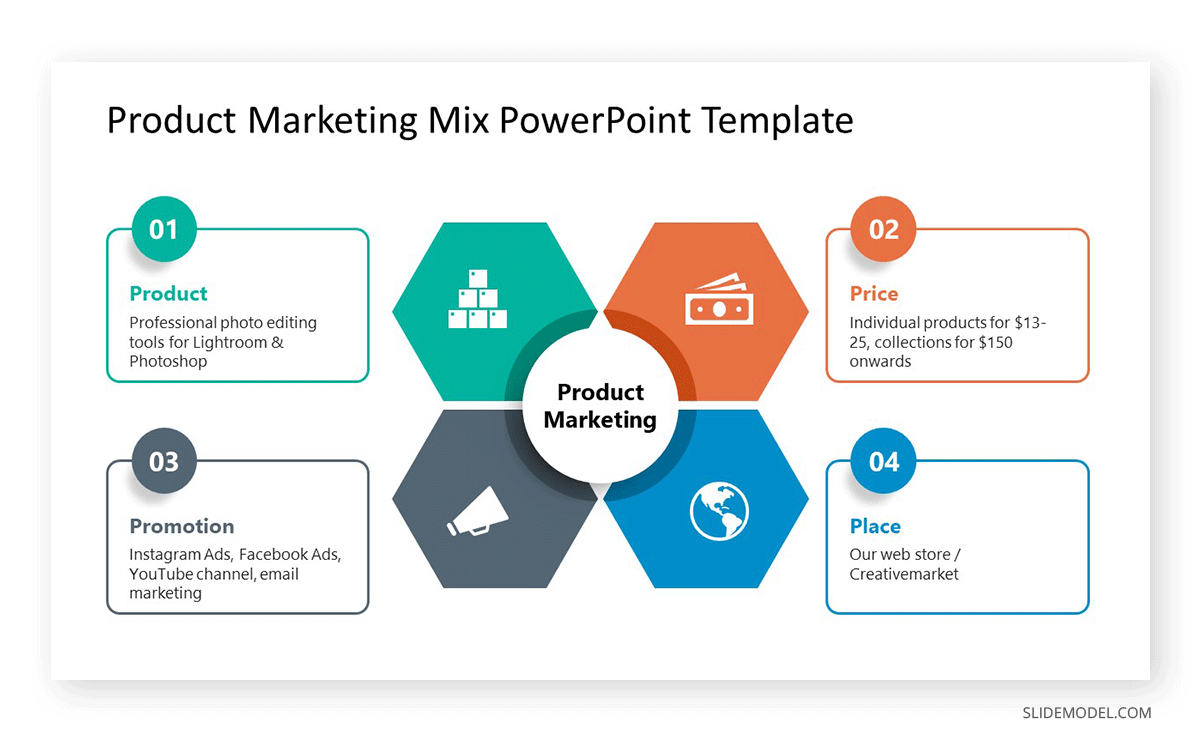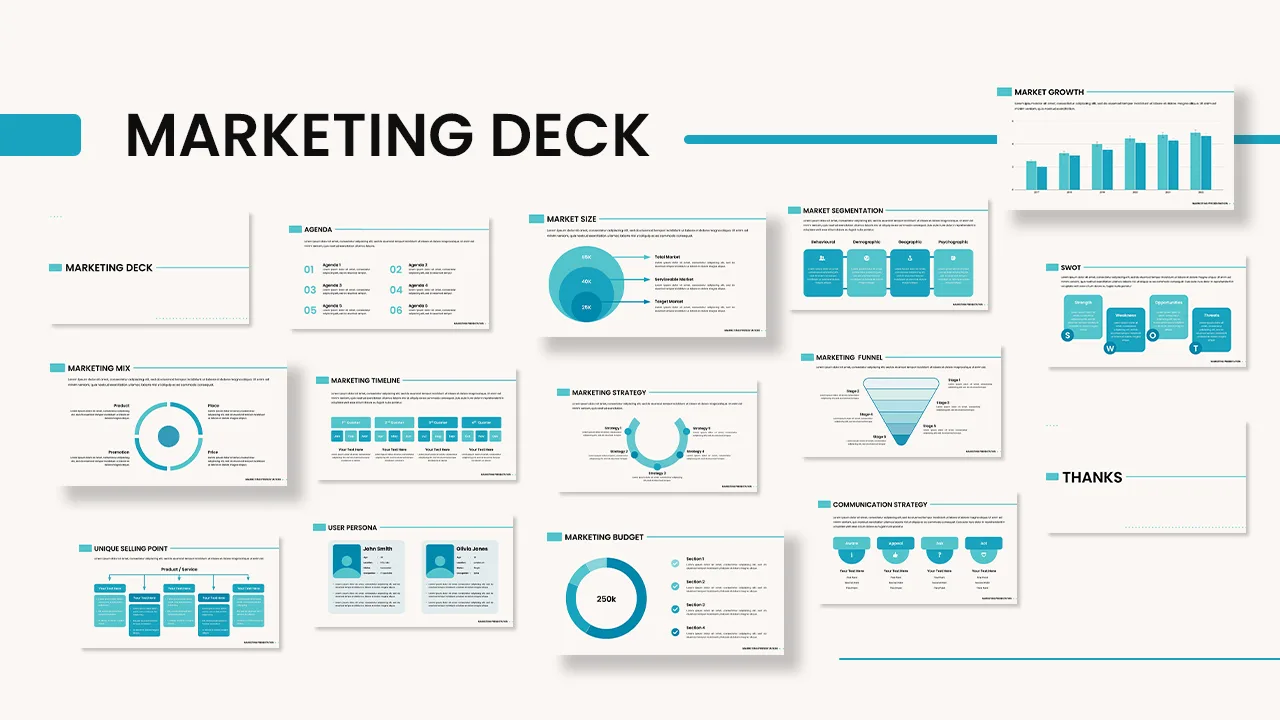The Ultimate Guide to Crafting an Effective Marketing Plan Presentation
In the realm of business, a well-crafted marketing plan presentation holds the key to success in a fiercely competitive landscape. This comprehensive guide is your ultimate resource, providing you with the essential strategies and techniques to create a compelling and impactful presentation. From defining your goals and understanding your audience to crafting persuasive narratives and delivering with confidence, you’ll gain the knowledge and skills to captivate stakeholders and drive the success of your marketing plan. Prepare to unlock the secrets of crafting an effective marketing plan presentation that will set you apart from the competition.
What is a Marketing Plan Presentation?
A marketing plan presentation is a visual and verbal representation of a comprehensive marketing plan. It is typically delivered to stakeholders, such as senior management, investors, or team members, to communicate the key elements of the marketing strategy and outline the tactics and initiatives to be implemented. A well-prepared marketing plan presentation effectively conveys the strategic direction and objectives of the marketing plan, along with the actions required to achieve them. Here are some key components typically included in a marketing plan presentation:
- Executive Summary: Begin the presentation with a concise overview of the marketing plan, highlighting the key objectives, target market, and key strategies. This section provides a high-level snapshot of the plan and captures the attention of the audience.
- Market Analysis: Present an analysis of the market, including market size, trends, customer segments, and competitive landscape. Use data and research to support your findings and provide insights into the market conditions and opportunities.
- Marketing Objectives: Clearly state the marketing objectives that the plan aims to achieve. These objectives should be specific, measurable, attainable, relevant, and time-bound (SMART). Align the objectives with the overall business goals and explain how they contribute to the organization’s success.
- Target Market and Buyer Persona: Describe the target market segments and buyer personas that the marketing plan focuses on. Provide a detailed profile of the ideal customer, including demographic, psychographic, and behavioral characteristics. This helps the audience understand who the plan is targeting and how to tailor marketing strategies accordingly.
- Competitive Analysis: Present an analysis of the main competitors in the market, including their strengths, weaknesses, market share, and key differentiators. Highlight how your marketing strategies will position your brand competitively and address any challenges posed by competitors.
- Marketing Strategies: Outline the key marketing strategies that will be implemented to achieve the objectives. This can include product positioning, pricing strategies, distribution channels, promotional activities, and branding initiatives. Explain the rationale behind each strategy and how it aligns with the target market and overall marketing objectives.
- Action Plan and Timeline: Present a detailed action plan that outlines the specific tactics, activities, and timelines for implementing the marketing strategies. Break down the plan into manageable tasks and provide a timeline that shows when each task will be executed. This demonstrates a clear roadmap for implementation and helps the audience understand the timeline and resources required.
- Budget and Resource Allocation: Provide an overview of the marketing budget and how it will be allocated across different marketing activities. This includes costs related to advertising, promotions, research, technology, and personnel. Explain the rationale behind the budget allocation and how it aligns with the objectives and strategies.
- Performance Measurement and KPIs: Highlight the key performance indicators (KPIs) that will be used to measure the success of the marketing plan. Explain how these metrics will be tracked and reported, and how they align with the marketing objectives. This shows the audience how progress will be evaluated and measured.
- Conclusion and Next Steps: Summarize the main points of the presentation and reiterate the key takeaways. Emphasize the importance of the marketing plan in achieving business objectives and highlight the next steps in the implementation process. This can include assigning responsibilities, seeking approval, and outlining the timeline for execution.
A well-structured marketing plan presentation should be visually appealing, concise, and engaging. It should effectively convey the marketing strategy, tactics, and goals, while also addressing any questions or concerns that the audience may have. By delivering a compelling marketing plan presentation, you can gain support and alignment from stakeholders and increase the chances of successful plan implementation.

Importance of a Marketing Plan Presentation
A marketing plan presentation plays a vital role in guiding your business’s marketing efforts. It serves as a roadmap, providing direction and clarity to your marketing initiatives. By presenting your strategies and objectives in a structured and organized manner, you can effectively communicate your vision and ensure everyone is aligned toward a common goal.
Benefits of a Well-Structured and Compelling Presentation
Crafting a well-structured and compelling marketing plan presentation offers several benefits for your business:
- Clarity and Alignment: A well-organized presentation ensures that all stakeholders have a clear understanding of the marketing objectives, strategies, and timelines. It fosters alignment and helps everyone work towards a common goal.
- Persuasion and Buy-in: An engaging presentation captures the attention of your audience and persuades them to buy into your marketing strategy. It helps build trust and credibility, increasing the likelihood of gaining support, funding, or approvals.
- Effective Communication: A well-crafted presentation simplifies complex marketing concepts, making them easier to comprehend and remember. It enables effective communication across different teams and departments, fostering collaboration and synergy.
- Measurement and Accountability: A structured presentation outlines key performance indicators and metrics, allowing you to track and measure the success of your marketing efforts. It holds the team accountable for achieving specific targets and facilitates data-driven decision-making.
- Competitive Advantage: A compelling presentation highlights your unique value proposition and differentiation. It positions your brand as innovative, reliable, and solution-oriented, giving you a competitive edge in the market.
In the following sections, we will delve deeper into the key steps and strategies for creating an impactful marketing plan presentation. By following these guidelines, you can elevate your presentations to new heights and drive exceptional results for your business.
Preparing for the Presentation

1. Understanding the Audience
Before diving into your marketing plan presentation, it is crucial to have a deep understanding of your audience. By knowing your audience’s background, needs, and preferences, you can tailor your presentation to resonate with them effectively. Here are the key steps to consider:
- Identifying the key stakeholders and decision-makers: Determine who will be attending the presentation and who holds decision-making power. This will help you focus your message and address their specific interests.
- Researching and analyzing the audience’s background: Gather information about the audience’s industry, market segment, and any relevant trends or challenges they may be facing. This will enable you to speak their language and provide valuable insights.
- Understanding the audience’s needs and preferences: Consider their goals, pain points, and motivations. This knowledge will allow you to position your marketing plan in a way that addresses their specific needs and resonates with their desires.
2. Setting Clear Objectives
Setting clear objectives is essential for a successful marketing plan presentation. Clearly defining your goals and outcomes will help guide your presentation and ensure its effectiveness. Consider the following:
- Defining specific goals and outcomes for the presentation: Determine what you aim to achieve with your presentation. It could be gaining approval for a marketing budget, securing buy-in from stakeholders, or aligning the team toward a common vision.
- Aligning the objectives with the overall marketing strategy: Ensure that your presentation objectives are in line with your broader marketing strategy. This alignment will demonstrate the coherence and effectiveness of your plan.
- Ensuring the objectives are measurable and realistic: Set objectives that are measurable, allowing you to track progress and success. Additionally, ensure that your objectives are realistic and achievable within the given timeframe and available resources.
3. Gathering Relevant Data and Insights
Data and insights form the foundation of a compelling marketing plan presentation. By conducting thorough market research and analysis, you can support your key points and recommendations with accurate and up-to-date information. Consider the following steps:
- Conducting market research to gather accurate and up-to-date data: Use various research methods to collect information about your target market, industry trends, customer behavior, and competitive landscape. This research will provide a solid basis for your marketing plan.
- Analyzing consumer behavior, market trends, and competitive landscape: Dive deep into the data you have collected and extract meaningful insights. Identify patterns, trends, and opportunities that can guide your marketing strategies and tactics.
- Using data-driven insights to support key points and recommendations: Incorporate relevant data and insights throughout your presentation to provide evidence and credibility. Use visualizations and examples to make complex information more digestible and compelling.
By investing time and effort in understanding your audience, setting clear objectives, and gathering relevant data, you will be well-prepared to create a compelling and impactful marketing plan presentation. These foundational steps will set the stage for the subsequent sections of your presentation, ensuring that your message resonates with your audience and drives results.
Structuring the Presentation

To create an impactful marketing plan presentation, it is crucial to structure your content in a way that engages your audience and effectively communicates your marketing strategy. Follow these key steps to craft a compelling storyline, define key messages and value propositions, and design visually appealing slides:
1. Creating a Compelling Storyline
A compelling storyline forms the backbone of your marketing plan presentation, capturing the attention of your audience and guiding them through your key points. Consider the following:
- Developing a clear narrative that engages the audience: Craft a storyline that takes your audience on a journey, starting with an attention-grabbing opening that sets the context and generates interest. Develop a logical flow that builds upon each point, leading to a well-structured and cohesive presentation.
- Defining a logical flow and structure for the presentation: Organize your content in a logical sequence, ensuring that each section flows seamlessly into the next. Use clear headings and subheadings to guide your audience and help them follow along easily.
- Incorporating a captivating opening and a memorable closing: Begin your presentation with a compelling hook that captures the audience’s attention and sets the tone for what’s to come. End with a memorable closing that reinforces your key messages and leaves a lasting impression.
2. Defining Key Messages and Value Proposition
Defining key messages and communicating your unique value proposition is crucial to convey your marketing strategy effectively. Consider the following:
- Identifying the core messages that convey the marketing strategy: Distill your marketing strategy into a few key messages that encapsulate your main ideas and objectives. These messages should be clear, concise, and impactful, resonating with your audience and aligning with your overall marketing goals.
- Communicating the unique value proposition and competitive advantage: Clearly articulate the unique value your products or services offer to customers. Highlight what sets your brand apart from competitors and explain how your marketing strategies leverage your competitive advantage to deliver value to customers.
- Ensuring consistency and clarity throughout the presentation: Maintain consistency in your messaging and ensure that each point supports and reinforces your overall marketing strategy. Avoid ambiguity and jargon, using clear and concise language to enhance clarity and understanding.
3. Designing Visual Aids and Slide Deck
Well-designed visual aids and a visually appealing slide deck enhance understanding, engagement, and retention of your marketing plan presentation. Consider the following:
- Choosing the right visual elements to enhance understanding and engagement: Select visuals, such as charts, graphs, infographics, and images, that effectively convey your message and make complex information more accessible. Use visuals to illustrate data, showcase examples, and support your key points.
- Creating visually appealing and professional slides: Design your slides with a cohesive visual style, using consistent colors, fonts, and layouts that align with your brand identity. Avoid clutter and ensure that each slide has a clear focus. Use whitespace effectively to enhance readability and visual impact.
- Utilizing data visualization techniques to present information effectively: Transform data into visual representations that are easy to grasp and interpret. Use charts, graphs, and diagrams to illustrate trends, comparisons, and key insights. Be mindful of choosing the most appropriate visualization for the data you want to present.
By structuring your marketing plan presentation with a compelling storyline, defining key messages and value propositions, and designing visually appealing slides, you can create an engaging and impactful presentation that effectively communicates your marketing strategy. These elements will captivate your audience, reinforce your brand, and increase the chances of achieving your marketing objectives.
Delivering the Presentation

To deliver an effective marketing plan presentation, it is essential to rehearse, engage the audience, and present with confidence and conviction. Follow these key steps to ensure a successful presentation:
1. Rehearsing and Practicing
Rehearsing and familiarizing yourself with the content is crucial for a polished and confident delivery. Consider the following:
- Importance of rehearsing and familiarizing oneself with the content: Rehearsing allows you to internalize the material, ensuring that you are well-prepared and knowledgeable about the marketing plan. Practice the presentation multiple times to become comfortable with the flow, transitions, and key messages.
- Practicing the delivery, including tone, pace, and body language: Pay attention to your tone of voice, pace of speech, and body language during practice sessions. Aim for a confident and engaging delivery that effectively conveys your passion for the marketing plan. Use gestures and facial expressions to enhance your message.
- Seeking feedback and making necessary improvements: Invite trusted colleagues or mentors to provide feedback on your presentation. Consider their suggestions and make necessary improvements to enhance clarity, impact, and overall effectiveness.
2. Engaging the Audience
Engaging the audience is crucial to maintain their attention and create a memorable experience. Consider the following techniques:
- Techniques for capturing and maintaining the audience’s attention: Start with a compelling opening that grabs the audience’s interest. Use storytelling, statistics, or thought-provoking questions to hook their attention. Maintain eye contact, move around the stage (if applicable), and vary your voice tone and inflection to keep the audience engaged.
- Encouraging participation and addressing questions effectively: Encourage audience participation by asking questions, conducting polls, or incorporating interactive elements. Address questions promptly and thoughtfully, making sure to clarify any uncertainties and engage in meaningful discussions.
- Utilizing storytelling, anecdotes, or visual aids to enhance engagement: Weave relevant stories or anecdotes into your presentation to make it relatable and memorable. Use visuals, such as charts, images, or videos, strategically to illustrate key points and break up the text-heavy content. Visuals can enhance understanding and engagement.
3. Presenting with Confidence and Conviction
Confidence and conviction are essential to inspire trust and convey expertise. Consider the following strategies:
- Strategies for exuding confidence and conveying expertise: Familiarize yourself with the material and be well-prepared. Practice speaking clearly and maintaining a confident posture. Dress appropriately for the occasion, aligning with your brand’s image. Project professionalism and expertise through your words and actions.
- Projecting enthusiasm and passion for the marketing plan: Showcase your enthusiasm and passion for the marketing plan throughout the presentation. Speak with conviction, emphasizing key points, and using vocal emphasis to convey excitement. Your energy and passion will resonate with the audience and make your presentation more compelling.
- Handling potential challenges or objections with poise: Anticipate potential challenges or objections that may arise during the presentation. Prepare thoughtful responses and address concerns with poise and professionalism. Remain open to feedback and demonstrate your willingness to adapt and find solutions.
By rehearsing and practicing, engaging the audience, and presenting with confidence and conviction, you can deliver an impactful marketing plan presentation that effectively communicates your ideas, engages stakeholders, and inspires action. Remember to stay authentic, maintain a positive attitude, and connect with your audience to create a lasting impression.
Conclusion
Unlock the potential of your marketing plan presentation with confidence and impact. This article has highlighted the key strategies to engage your audience, exude confidence, and convey your expertise. Key takeaways include:
- Rehearsing and Practicing: Polish your performance by rehearsing and seeking feedback to deliver a polished presentation.
- Engaging the Audience: Captivate your audience through attention-grabbing techniques, participation, and compelling storytelling or visual aids.
- Presenting with Confidence: Demonstrate your expertise and handle challenges with poise to enhance your credibility.
Crafting a well-crafted marketing plan presentation is crucial for sharing goals, engaging stakeholders, and inspiring action. Implement the strategies outlined in this article to create a compelling presentation that resonates with your audience.
Remember, practice and preparation are essential. Utilize visual consistency, readability, and various mediums to enhance the visual appeal and understanding of your presentation.
It’s time to put these strategies into action. Adapt them to your own marketing plan presentations, confidently communicate your strategies, captivate your audience, and achieve your desired outcomes. Embrace the power of a compelling presentation and let your marketing strategy shine.

